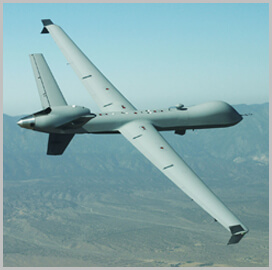The 2nd Marine Aircraft Wing under Marine Unmanned Aerial Vehicle Training Squadron 2, or VMUT-2, began assembling its first MQ-9A Reaper remotely piloted aircraft on April 10, following the delivery of parts to Marine Corps Air Station Cherry Point in March.
According to VMUT-2 commanding officer Lt. Col. Michael Donlin, the assembly of the Reaper aircraft is part of his squadron’s transition to becoming the MQ-9A Fleet Replacement Squadron, which will be responsible for training Marine Corps MQ-9A pilots and sensor operators, the U.S. Marine Corps reported Monday.
The arrival of the MQ-9A aircraft also marks VMUT-2’s move away from the RQ-21A Blackjack platform, which 2nd MAW had used as its primary unmanned aircraft system until July last year.
A medium-altitude, long-endurance Block 5 remotely piloted aircraft, the MQ-9A Extended Range Marine Air-Ground Task Force unmanned expeditionary aircraft will work to provide a variety of capabilities, including intelligence, surveillance and reconnaissance.





